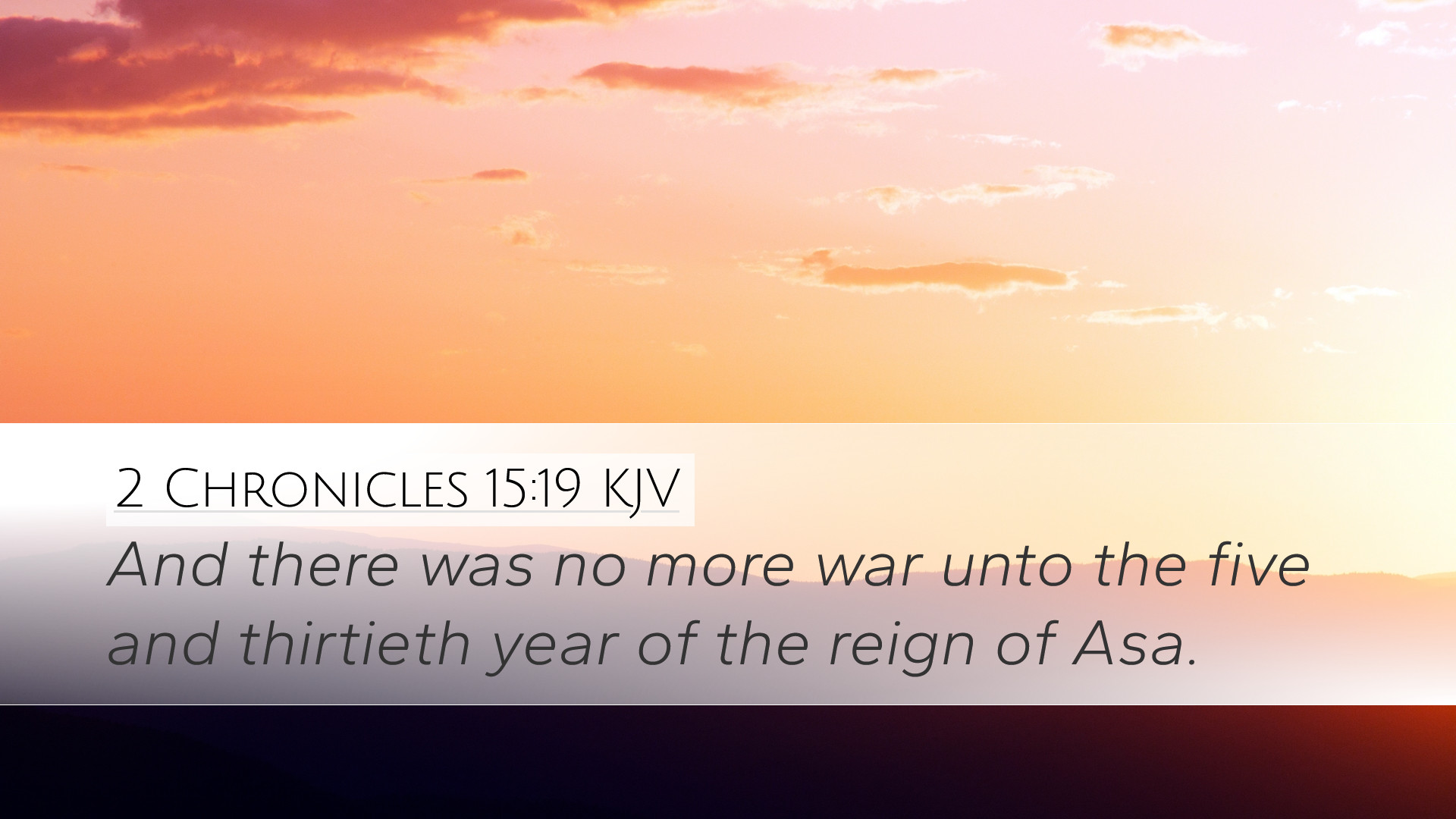Commentary on 2 Chronicles 15:19
Verse Text: "And there was no more war unto the five and thirtieth year of the reign of Asa."
Introduction
This verse encapsulates a significant period of peace during King Asa's reign over Judah. In the broader context of 2 Chronicles, it reveals the theological and historical dimensions of Asa's leadership, demonstrating the consequences of faithfulness to God.
Historical Context
2 Chronicles 15 recounts Asa's reforms and the revival of true worship in Judah. After facing a substantial threat from Zerah the Cushite, Asa relied on God and saw a miraculous victory, as noted in 2 Chronicles 14:8-12. This success initiates a renewal of covenantal faithfulness among the people of Judah. The peace mentioned in verse 19 signals the blessings of God following their return to Him.
Theological Reflections
Each public domain commentator offers unique insights into this passage. Here is a synthesis based on the works of Matthew Henry, Albert Barnes, and Adam Clarke:
Matthew Henry's Commentary
Henry emphasizes the significance of divine support in Asa's military successes and peace. He points out that, with God at the forefront of leadership, the blessings of peace can flourish. Asa's commitment to removing idolatry and restoring true worship set the stage for an extended time of tranquility, showcasing the principle that spiritual fidelity often coincides with national peace.
Albert Barnes' Commentary
Barnes underlines the prolonged peace as a direct result of Asa's reforms and reliance on God. He notes that "no more war" indicates not merely the absence of conflict but also the strength of Judah's position during this time. The passage illustrates that spiritual health leads to political stability. Furthermore, this peace reflects God's favor, suggesting that external pressures can lead to internal reforms when leaders are guided by divine wisdom.
Adam Clarke's Commentary
Clarke provides a more detailed exploration of the implications of Asa's reign. He remarks that the length of peace—lasting until Asa’s thirty-fifth year—indicates the effectiveness of Asa's policies and reforms. He highlights that this period allows for a flourishing of both civic and spiritual life, as the people enjoyed the fruits of their leader's piety. Clarke also notes there were different types of warfare present, including social and spiritual conflicts, but emphasizes how Asa's reign provided a buffer against these iniquities through his reliance on God.
Implications for Modern Faith Communities
From these insights, several important implications emerge for contemporary faith communities:
- Leadership and Accountability: Asa's example illustrates the necessity of leaders grounding their decisions in spiritual principles, which can foster an environment of peace.
- Collective Reform: As the nation returned to God, so too did individuals. The communal aspect of Asa's reforms suggests that church leaders today must seek collective reformation and revival.
- Peace as a Divine Blessing: The absence of conflict is not simply a historical fact but a theological affirmation that faithfulness to God leads to peace. This is an encouragement for modern believers to continually evaluate their faithfulness.
Conclusion
2 Chronicles 15:19 stands as a testimony to the results of a faithful and reformative leadership under God. Through the insights of respected commentators, we recognize that Asa's reign embodies both the challenges and triumphs faced by spiritual leaders. It encourages current and future leaders within the church to seek a similar reliance on God, knowing that true peace originates from a steadfast relationship with the Divine.


